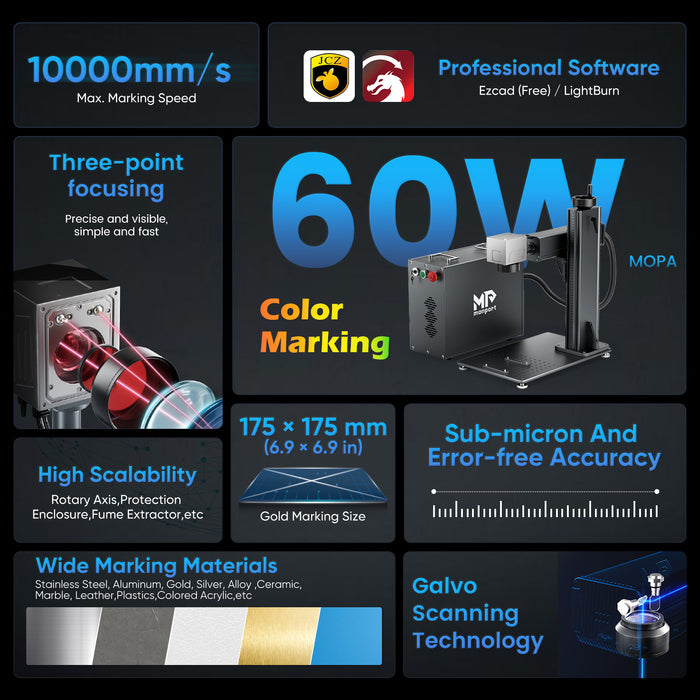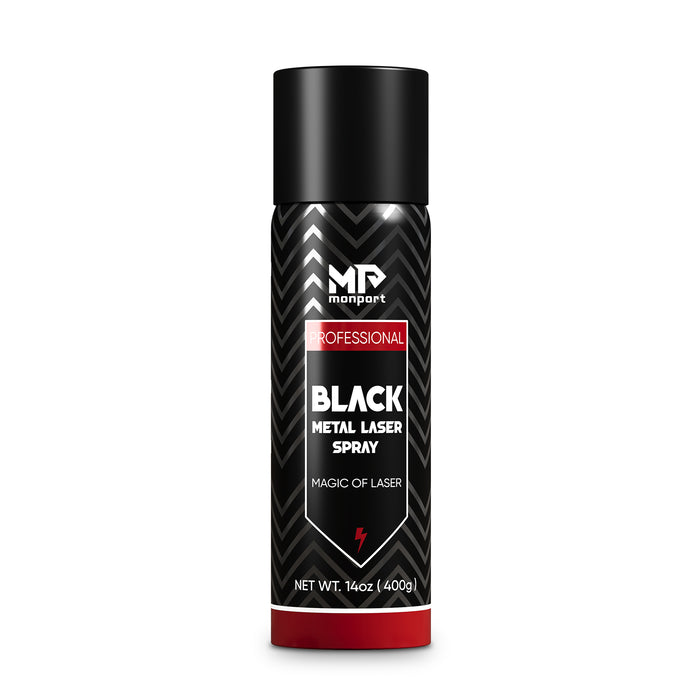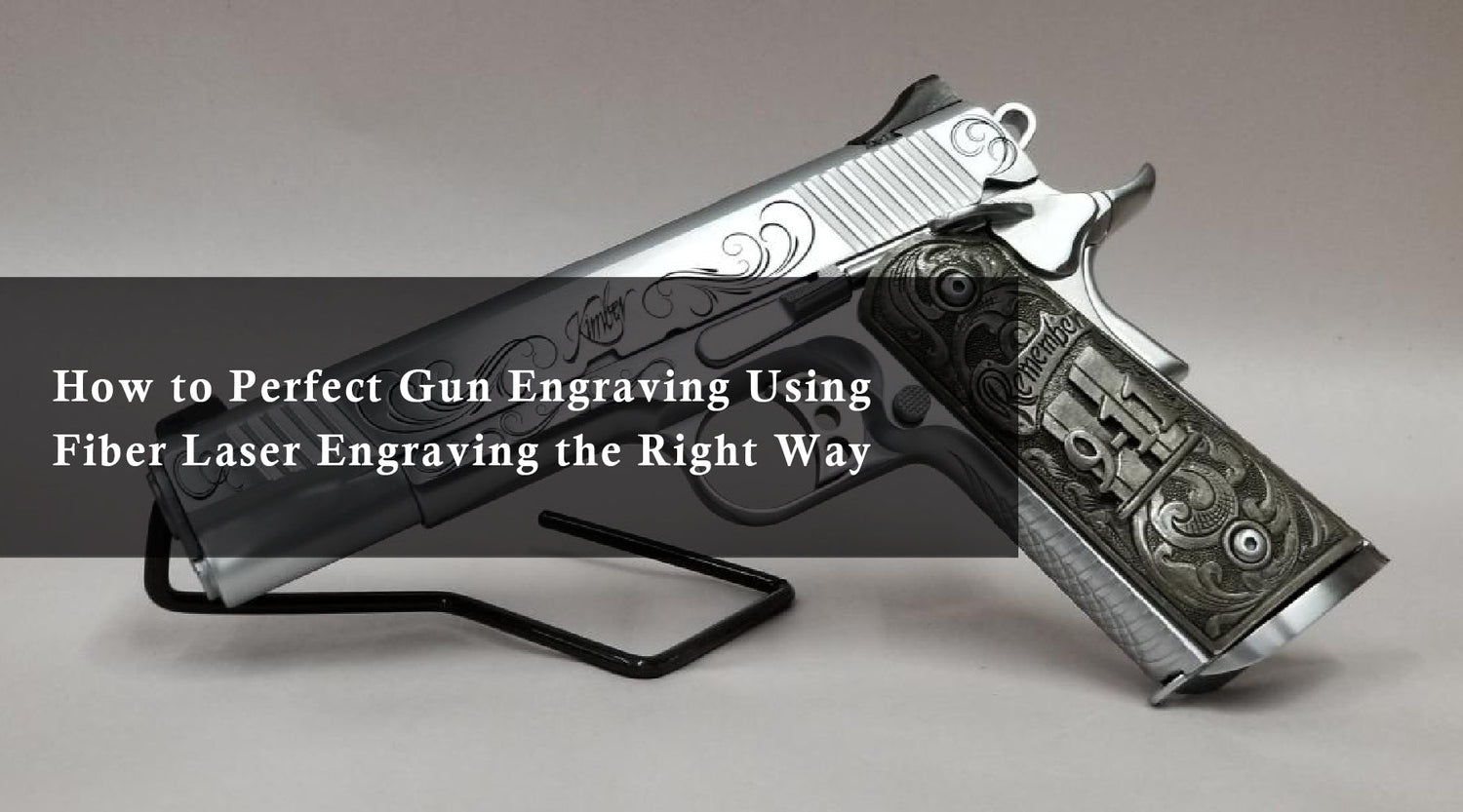Introduction
Laser engraving for wood and metal has revolutionized the way we personalize and create detailed designs on various materials. Two of the most popular types of laser cutter engraving machines are CO2 lasers and fiber lasers. This article will explore what is the difference between CO2 lasers and fiber lasers, particularly for wood and metal.
Laser Engraving Machines for Wood and Metal
Laser cutter engraving machines are versatile tools capable of etching intricate designs onto a wide range of materials. When it comes to engraving wood and metal, selecting the right type of laser cutter is crucial to achieving the desired results.
1. Laser Engraving on Wood
Wood is a favorite material among crafters and artisans for laser engraving due to its natural beauty and versatility. With laser engraving, you can create intricate patterns, detailed images, and custom text on various types of wood, including hardwood, softwood, plywood, and MDF.
-
Applications:
- Customized home decor
- Personalized gifts (e.g., cutting boards, photo frames)
- Signage
- Furniture embellishments
2. Laser Engraving on Metal
Engraving metal requires a powerful laser cutter capable of marking or etching the hard surface. Metals such as stainless steel, aluminum, brass, and titanium are commonly engraved for industrial, commercial, and artistic purposes.
-
Applications:
- Industrial part marking
- Custom jewelry
- Promotional items (e.g., pens, keychains)
- Machine tags and nameplates
Understanding CO2 and Fiber Lasers
Both CO2 and fiber lasers are widely used for laser engraving, but they have distinct characteristics that make them suitable for different materials and applications.
1. CO2 Lasers
CO2 lasers are gas lasers that use a mixture of carbon dioxide, nitrogen, and helium gases to produce a laser cutter beam. These lasers are highly effective for engraving non-metallic materials.
-
Strengths:
- Versatility: CO2 lasers excel at engraving and cutting a variety of non-metallic materials, including wood, acrylic, glass, leather, and fabric.
- Quality: They produce high-quality engravings with smooth edges and fine details on organic materials.
-
Limitations:
- Metal Engraving: CO2 lasers are not as effective on metals without the use of special coatings or additives that enhance their ability to mark metal surfaces.
2. Fiber Lasers
Fiber lasers are solid-state lasers that use optical fibers doped with rare-earth elements such as ytterbium to generate a laser beam. These lasers are particularly effective for metal engraving.
-
Strengths:
- Metal Engraving: Fiber lasers excel at marking and engraving metals, producing deep and durable marks with high precision.
- Speed and Efficiency: They are faster and more energy-efficient compared to CO2 lasers when it comes to metal engraving.
- Low Maintenance: Fiber lasers have fewer moving parts and longer lifespans, making them low-maintenance and reliable.
-
Limitations:
- Non-Metallic Materials: Fiber lasers are not as versatile with non-metallic materials. While they can engrave some plastics, they are generally not suitable for materials like wood or acrylic.
Comparing CO2 and Fiber Lasers
-
Material Compatibility:
- CO2 Lasers: Best for non-metals (wood, acrylic, glass, leather).
- Fiber Lasers: Best for metals (stainless steel, aluminum, brass) and some plastics.
-
Engraving Quality:
- CO2 Lasers: High-quality, detailed engravings on non-metallic surfaces.
- Fiber Lasers: High-precision, deep engravings on metals.
-
Speed and Efficiency:
- CO2 Lasers: Slower on metals, efficient on non-metals.
- Fiber Lasers: Faster and more efficient on metals.
-
Maintenance and Lifespan:
- CO2 Lasers: Require more maintenance due to the presence of moving parts and gas refills.
- Fiber Lasers: Low maintenance with longer lifespans and fewer moving parts.
Choosing the Right Laser Engraving Machine
When deciding between a CO2 laser cutter and a fiber laser, consider the materials you plan to work with and the specific requirements of your projects.
-
For Wood and Non-Metal Projects:
- A CO2 laser engraving machine is the ideal choice due to its versatility and high-quality results on non-metallic materials.
-
For Metal Projects:
- A fiber laser engraving machine is the best option, offering precision, speed, and durability for metal engraving tasks.
Effortless Laser Marking with Monport Black Laser Marking Spray
Looking to elevate your laser engraving projects? Monport Black Laser Marking Spray is the solution you’ve been waiting for. This high-performance aerosol spray is designed for use with CO2 laser engraving machines, ensuring easy and precise results with every application. Whether you're personalizing jewelry, customizing glassware, or serializing tools, this spray provides you with high-contrast, permanent marks that stand out.
The Benefits of Using Black Laser Marking Spray
-
Compatible with CO2 Laser Engraving Machines Designed for use with CO2 laser engraving machines of 25 watts and above, Monport Black Laser Marking Spray is the ideal companion for your engraving needs. It transforms your metal surfaces into highly legible, permanent black marks after laser engraving, making it perfect for a wide range of applications from metalwork to custom art pieces.
-
Permanent, High-Contrast Marks When you apply Monport Black Laser Marking Spray, the result is a high-contrast, dark black mark on your metal surface that is permanent and durable. This spray works on various metals, including aluminum, stainless steel, and brass. The fine-grained formula ensures deep penetration into the metal, producing heat-resistant markings that will last for years, even under challenging conditions.
-
Even and Powerful Application With the advanced spray technology in Monport Black Laser Marking Spray, you can achieve a smooth, even application every time. The 14 oz can features an anti-clog nozzle that guarantees no blockages, making the spray process both easy and efficient. The nanoparticle formula delivers more coverage with a thinner coating, which results in a professional-quality finish for all your metal marking projects.
-
Easy to Use and Quick Drying Using Monport Black Laser Marking Spray couldn’t be simpler. Just shake the can for 2 minutes, spray from a distance of 6 to 8 inches, and let the surface dry for 5 minutes. Once it’s dry, you’re ready to engrave, saving you valuable time. After engraving, rinse and wipe away the residue to reveal your crisp, dark black markings without any fuss.
-
Effortless Cleanup and Maintenance After marking your metal pieces, simply rinse and wipe the surface to reveal your high-contrast engraving. The black laser marking spray ensures there is no residue left behind, so your workpieces remain clean and ready for immediate use. The easy cleanup means that you can maintain a smooth and efficient workflow, whether you’re working on a small DIY project or a larger-scale production.
Why Choose Monport Black Laser Marking Spray?
Monport’s Black Laser Marking Spray is a game-changer for anyone looking to create durable, precise, and high-quality laser marks on metal surfaces. Its compatibility with CO2 lasers, combined with its easy application and cleanup, makes it an indispensable tool for professionals and hobbyists alike. With Monport Black Laser Marking Spray, you can be confident that your metal engraving projects will have permanent, high-contrast results every time.
Add this versatile spray to your toolkit today and experience effortless laser marking like never before!
Conclusion
Laser engraving machines have opened up new possibilities for customizing and personalizing items made from wood, metal, and other materials. By understanding the differences between CO2 and fiber lasers, you can select the right tool for your projects and achieve stunning results. Whether you're an artisan crafting unique wood pieces or an industrial professional marking metal parts, the right laser engraving machine can elevate your work to new heights.












